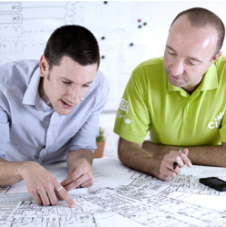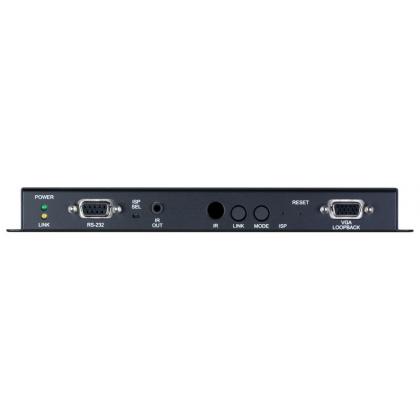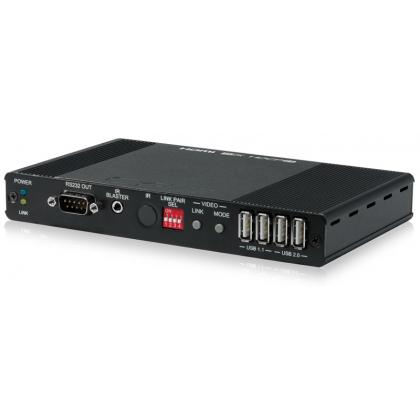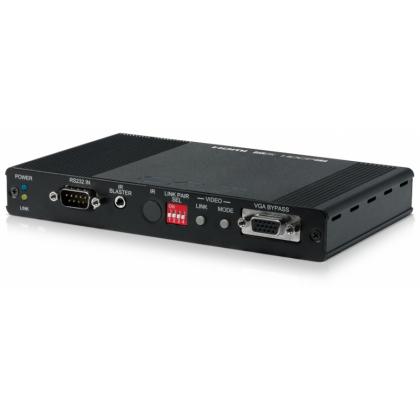What is Video-over-IP?
HowToAV speaks to CEDIA's David Meyer about Video over IP (Video over Internet Protocol), the increasingly realistic alternative to, for example, SDVoE and Dante AV, as well as more established AV transmission technologies such as HDBaseT.
What is Video over IP?
Video over IP (Video over Internet Protocol - sometimes referred to as network video or AV-over-IP) is the transmission of audio, video and control signals over a standard network cable infrastructure - for example WAN, LAN or the internet. In comparison to conventional analogue AV environments, Video over IP refers to the use of standard network infrastructure to switch and transmit high resolution video and audio signals - with low latency, long distance tramission capabilities and increased levels of control and zoning from remote platforms and user interfaces.
Why has Video-over-IP taken so long to become a realistic alternative?
Video-over-IP has been around for a number of years; however; network video as a viable commercial option for effective video distribution has required significant steps forward in the technology and chipsets becoming readily available and adopted by manufacturers and the AV & smart home industries. Only in the past year or so has the chipset technology been advanced enough to handle the highest video frame rates and resolutions of 4K and 8K content.
Is there one Video-over-IP standard?
Video-over-IP is transmitted using standard Ethernet protocol (the same Ethernet network used for computer networks and other 'over-IP' technologies such as CCTV, audio, etc). Ethernet has been around for over 40 years, it's a tried and tested technology that is finally in a postion to be able to look after the transport of bandwidth hungry high resolution AV packets. Video signals are rich in resolutions which means there are lots of AV packets to be transported.
There are a number of network video platforms available, all of which transmit high resolution audio and video signals over Ethernet, which include HDBaseT, AVLC, SDVoE Dante AV and so on. However, it is worth noting that not all of these protocols transmit AV over a wide area network and only work on a LAN. Other protocols do, however, benefit from other features and functions - for instance, HDBaseT will not only transmit video and audio, but also simultaneously transmit PoE, 100Baset Ethernet and control signals.
How does AV over IP differ from standard cabling?
AV over IP is all about IP (internet protocol), it sends internet packets of data over a network (LAN, WAN, fiber, etc). Where as standard cabling is sending data through a proprietary cable infrastructure such as HDMI , VGA, DisplayPort, etc.
What is the right platform to use for AV?
It is a case-to case-situation, and is down to the installer. Both methods using HDMI or AV-over-IP are valid for different scenarios. In summary, there is no one-size-fits-all solution and you should consider a number of technologies before making a decision. There is, of course, the possibility of mixing different distribution solutions.
What are the things we need to consider with AV-over-IP?
This is an IP tried and tested environment, with that comes a certain amount of knowledge. Such as being confident with the OSI model, knowing what IP actually is and how data packets collect various other protocols on the way down to the physical layer. Having confidence in IP is key when selling an AV over IP solution to a customer and when trying to troubleshoot something. We are integrating more with IT guys, therefore we have a duty of care as an industry to learn more about IP.
What are the key benefits of AV-over-IP?
- It is infinitely scalable, you can add more to your system really simple and remove them just as easy!
- Distribution is simpler and not centralised which can be an advantage over the more traditional matrix switches.
- Breaks the distance barriers
- Better ratio of inputs to outputs
- Video standards extend beyond the local facility
- Convergence with data and communications
- New options in video processing
Need help with your AV-over-IP products or system design?
 CIE is one of the UK's leading providers of professional AV technologies. Our team of AV system designers provide a unique free system design service for our customers to ensure that - where appropriate - the latest IP and Video over Ethernet technologies are used to provide high performance, flexible and expandable solutions. View AV-over-IP projects designed and supplied by CIE here.
CIE is one of the UK's leading providers of professional AV technologies. Our team of AV system designers provide a unique free system design service for our customers to ensure that - where appropriate - the latest IP and Video over Ethernet technologies are used to provide high performance, flexible and expandable solutions. View AV-over-IP projects designed and supplied by CIE here.
If you would like to discuss how CIE can support your IP system design, please call us on T. 0115 9770075 or contact us today.











